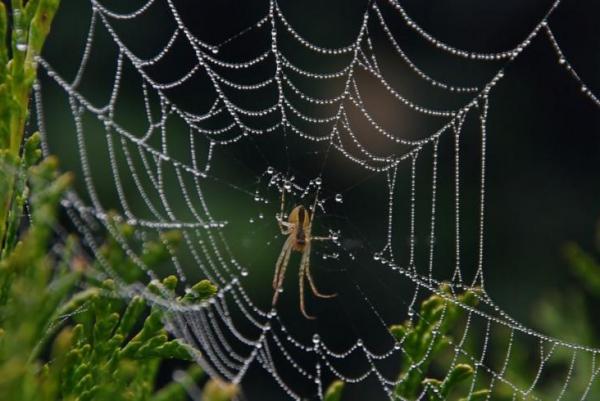
OXFORD, England, Dec. 16 (UPI) — Web-building spiders don’t often bask in the glory of their creation. They hang out off-screen, keeping tabs on their arrangement via a special strand of silk fibers, a signal thread.
Until now, researchers weren’t exactly sure how this communicative thread worked. New research out of the University of Oxford has offered insights into how the sector web spider uses its solitary signaling thread.
The signal thread of the sector web spider — sometimes called the missing sector orb weaver or the silver-sided sector spider — serves two purposes, acting as a monitoring tool and as the arachnid’s main route of escape.
“The spiders that employ signal threads seem to make the most of the added protection from a retreat, while still being able to detect the important web vibration signals from afar,” researcher Beth Mortimer, a zoologist at Oxford, said in a press release.
Mortimer and her colleagues were surprised to find signaling threads measured in the field varied in thickness. Some were composed of as few as four silk fibers while others had as many as 16.
In documenting the spiders’ use of their webs and signal threads, researchers realized each time a spider travels across its escape line it adds another fiber, making it stronger.
“The implications of the variable structure of the signal threads are carefully controlled by the spider,” Mortimer said. “As more fibers are added to the signal thread, the spider carefully tensions each one to simultaneously increase the overall tension of the signal thread. This is important, as the vibrational properties of the signal thread remain constant across many different signal thread sizes.”
The woven fibers are structured so that they act as a single thread, carrying vibrations efficiently.
“Overall, the signal thread structure and properties give freedom to the spider to move along the signal thread to and from the web as opportunities for prey capture arise,” added Mortimer.
The findings, published in the journal Interface, could be used to inspire remote signalling technology or to improve devices that convert vibrations into electricity.






